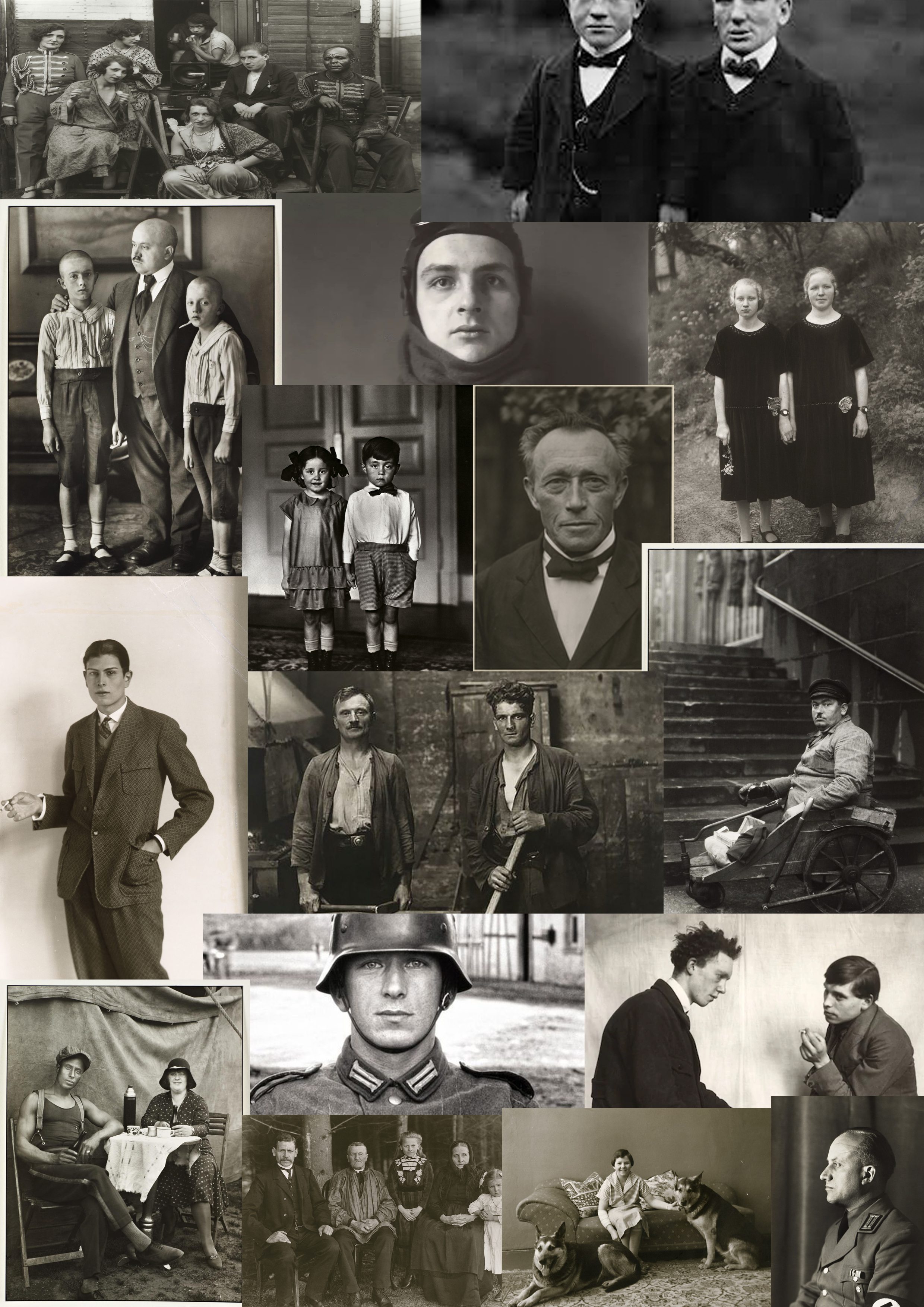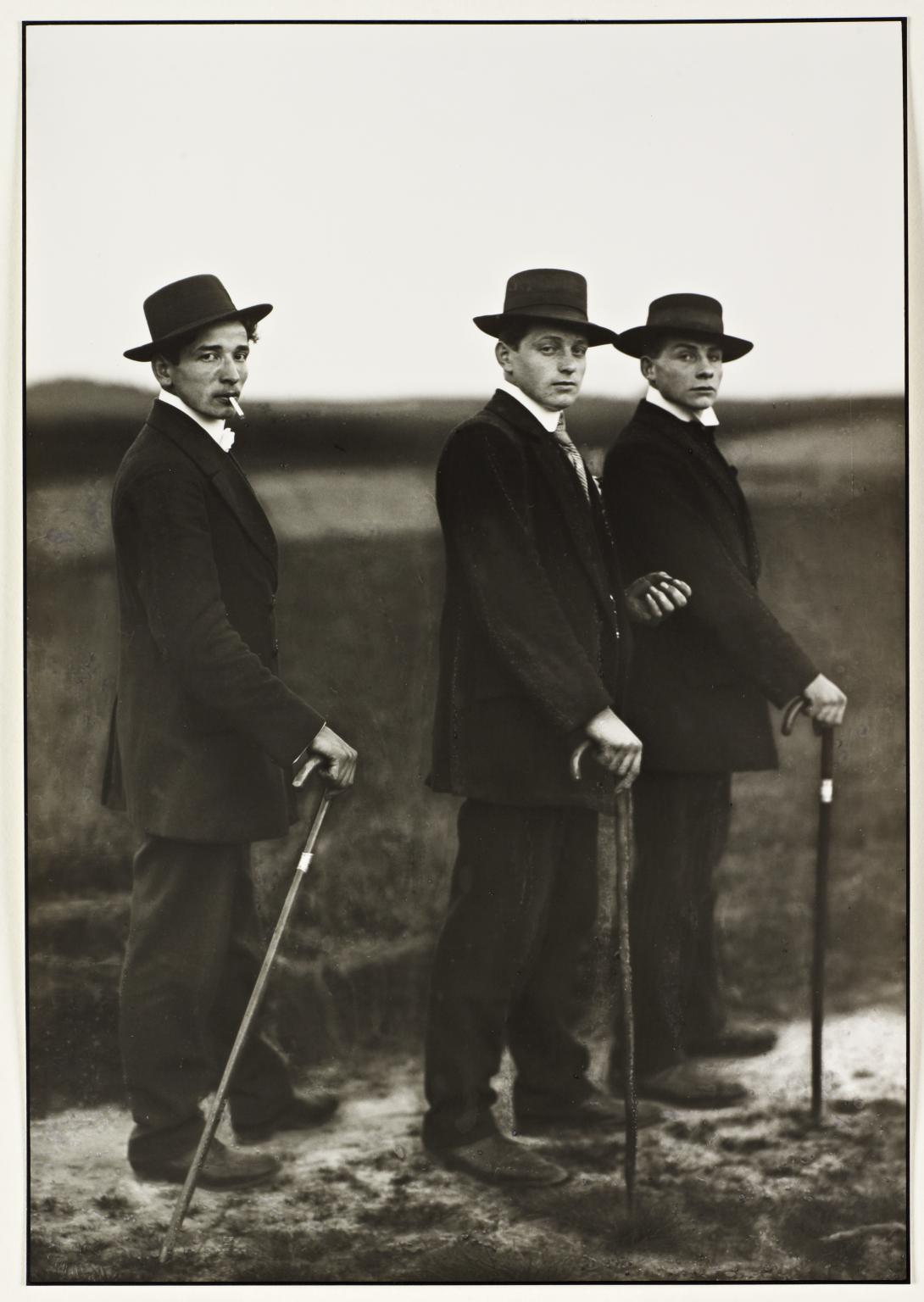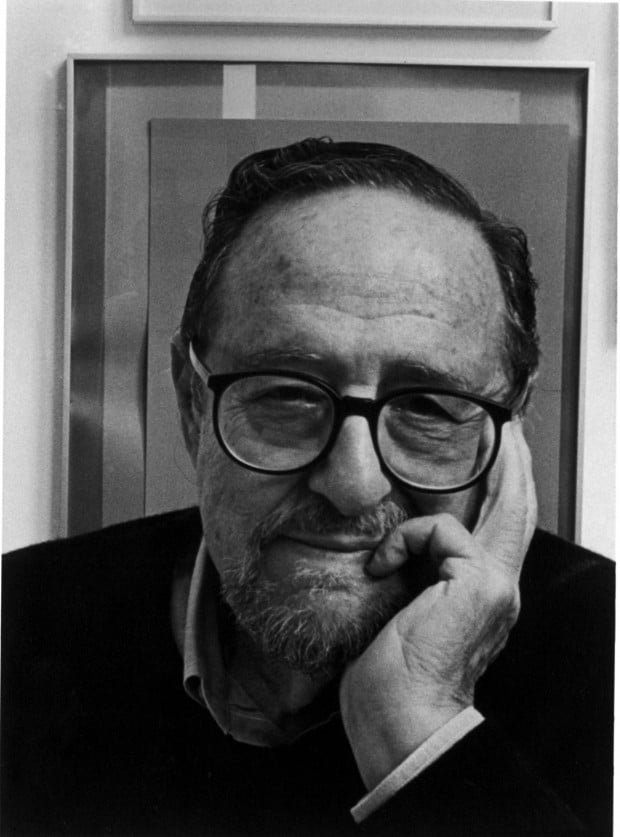What is portrait Photography?
Is a photography of a person or a group of people which captures the personality and the subject, using a series of techniques to create different techniques.
What is portrait Photography?
Is a photography of a person or a group of people which captures the personality and the subject, using a series of techniques to create different techniques.
AUGUST SANDERS, BACKGROUND INFORMATION:
During military service, August Sander was an assistant in a photographic studio in Trier; he then spent the following two years working in various studios elsewhere. By 1904 he had opened his own studio in Linz, Austria, where he met with success. He moved to a suburb of Cologne in 1909 and soon began to photograph the rural farmers nearby. Around three years later Sander abandoned his urban studio in favor of photographing in the field, finding subjects along the roads he traveled by bicycle.
Sanders set out on a photographic project to document the people of his native Westerwald, near Cologne. Sander photographed subjects from all walks of life and created a typological catalogue of more than six hundred photographs of the German people. Although the Nazis banned the portraits in the 1930s because the subjects did not adhere to the ideal Aryan type, Sander continued to make photographs. After 1934 his work turned increasingly to nature and architectural studies.
MOOD-BOARD:

WORK ANALYSIS:

TECHNICAL:
The image picturing the young farmers is well exposed, slightly on the over exposed side as the bright white sky and highlights are very prominent in this image.
VISUAL:
This black and white photograph is a group portrait of three young men portrayed outdoors on a path in a natural setting. They stand behind each other in single file, their bodies facing in the same forward direction perpendicular to the picture plane, their heads looking to their right straight at the camera. All three of them wear suits and hats and gaze with some self-assurance directly at the photographer. The young man on the left has unkempt hair peeking out from his tilted hat, a cigarette dangling nonchalantly from his lips, and holds a wooden cane at an angle to the ground. The central figure is holding a cigarette in his left hand and clasps a cane in the other, while the man on the right and at the front of the group seems rooted to the spot, his cane held straight to the ground echoing his upright posture.
CONTEXTUAL:
The photograph was taken by August Sander using a large format, glass plate camera with a long exposure time, the kind primarily used in portrait studios. This is one of many photographs taken by him of rural people from the wooded low mountain region of Westerwald in the German federal states of Rhineland-Palatinate, Hesse, and North Rhine-Westphalia. Westerwald was the region where the photographer was born, and it was where he traveled in search of new clients after setting up his portrait studio in Cologne-Lindenthal in 1910, having returned to Germany the previous year from Linz, Austria.
About Arnold Newman and his photography
Arnold Newman who lived from 1918 to 2006 growing up through the war where some of his most famous pieces were produced. His career really began to develop when he began to focus his photography on to a particular type of photography called environmental photography in which he primarily worked for magazines. He would walk around carrying his camera and light to his subjects, capturing his participants in their surroundings. Newman was a renowned for photographing the distinguished famous faces at the time. Newman’s images often left plenty of room for interpretation from the viewer, allowing all types of opinions to flow in.
In 1963 after the war was over, Arnold Newman was commissioned by Newsweek magazine to take some photos of a German industrialist – Alfred Krupp. Which is now one of his most famous pieces at its said to capture an array of emotions and feelings to each individual looking at the image.
![]()
Emotional Response
When firstly looking at this image I was initially drawn to the strange man in the center, who was the German industrialist – Alfred Krupp. The photograph presents the man in the center of the image, with his hands clasps resting- fingers intertwined- resting his head on them. With his eye view looking straight into the camera, giving strong eye contact to the viewer, almost giving the impression of a threatening face. The way the shadows are formed demonstrations the mysteriousness radiating off Krupp face. The image helps represent the age of the man with his thin grey hair, brushed to one side and wrinkles speed across his forehead. Krupp is dressed in a smart suit grey suit and looking very presentable, giving the idea of high power and class at the time. He is sat at the front of what looks like a train station which is no longer in action. This is showed through the low maintenance and quality of the back ground functions. The contrasting in light shining through from the back emphasizes even more Krupp sat in the front of the trains, and helps darken Krupp’s even more, adding to the idea of curiosity of why Krupp is in the train station.
Technical Response
For this image it is color based which helps show the key details, for example textures and strongly emphasizes the differences between the foreground and background. There is a clear contracts between the foreground and back ground. With the background showing high exposure and there is an excess of natural sun light flushing in through the windows on to the old run down train station. This presents a more clear view of the train station and all its details, like the copper rust. These high quality leading lights seeping in assist the textures and colors used demonstrate rusting and really presents the idea of the station being extremely run down. This could lead our thought trail to why Krupp was photographed there. Due to the over exposure in the back ground somewhat draw or attention to the fore ground where Krupp is sat in much darker conditions. Thanks to the over exposure in the background and under exposure in the foreground help present the image with a range of shadows, which I believe aids the feeling of the image. The lens was most likely to be a wide lens to the varse amount of item and things in the image, the wide lens also shows the camera was facing pretty much straight on however the position of Krupp could suggest that it was a slightly higher up view.
Contextual Response
Knowing full well that Krupp was a strong Nazi follower and had preciously used his factory for slave labor in the Second World War in order to supply the army with Nazi war machines. Later on Krupp then got convicted of a numerous about of crimes and was due to serve twelve years in prison in which he was released after the third year. Newman initially turned down the offer from Newsweek commission however after a long debate with the editor Newman finally agreed to participate. On the side Newman had promised himself to portray Krupp for who he truly was ‘the devil’. On first appearance with a group of men associated with Krupp and his factories the portrait was canceled. Newman beloved this to of happened due to his appearance, this was an issue for Krupp as Newman was a Jewish. But after a long time convincing Newman finally persuaded the Krupp company to go on with the portrait. Newman’s ‘revenge’ was satisfied when the image was published and fully represented the evil behind the man.
Conceptual response
The concept of this piece was simply Arnold Newman’s revenge on Krupp for what he believed to be a ‘monster’ causing immense pain and chaos throughout the period he was upcoming. Newman intended to create this portrait in order to fully represent Newman’s true colour to the editors of the magazine and the public by producing an intense piece centred around Krupp himself being shined in a dark light.
Photographer Arnold Newman,
